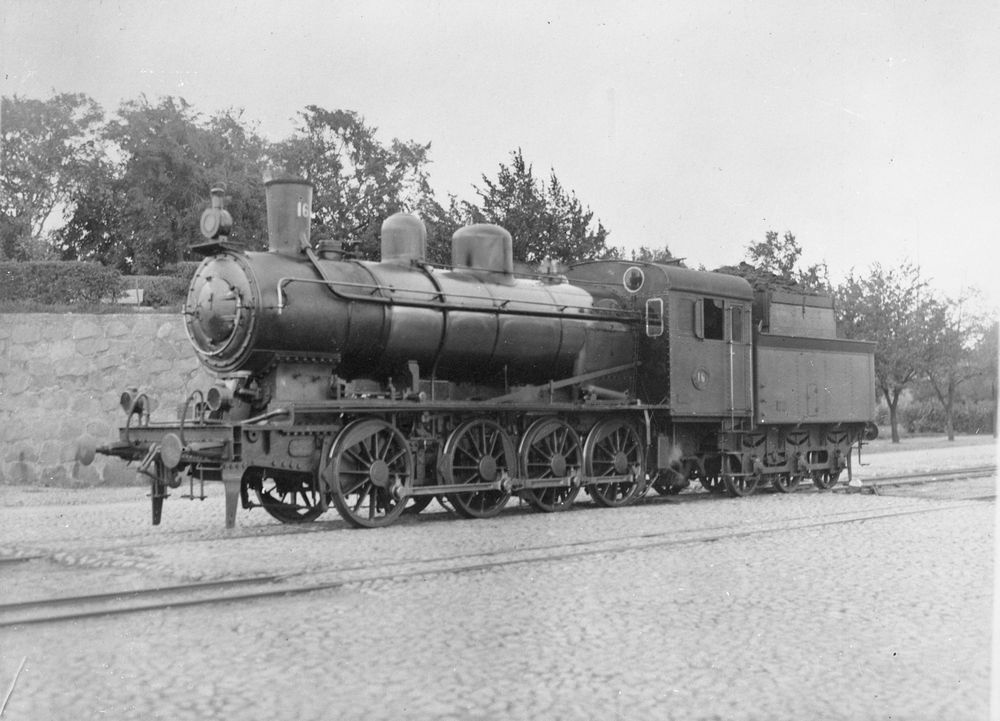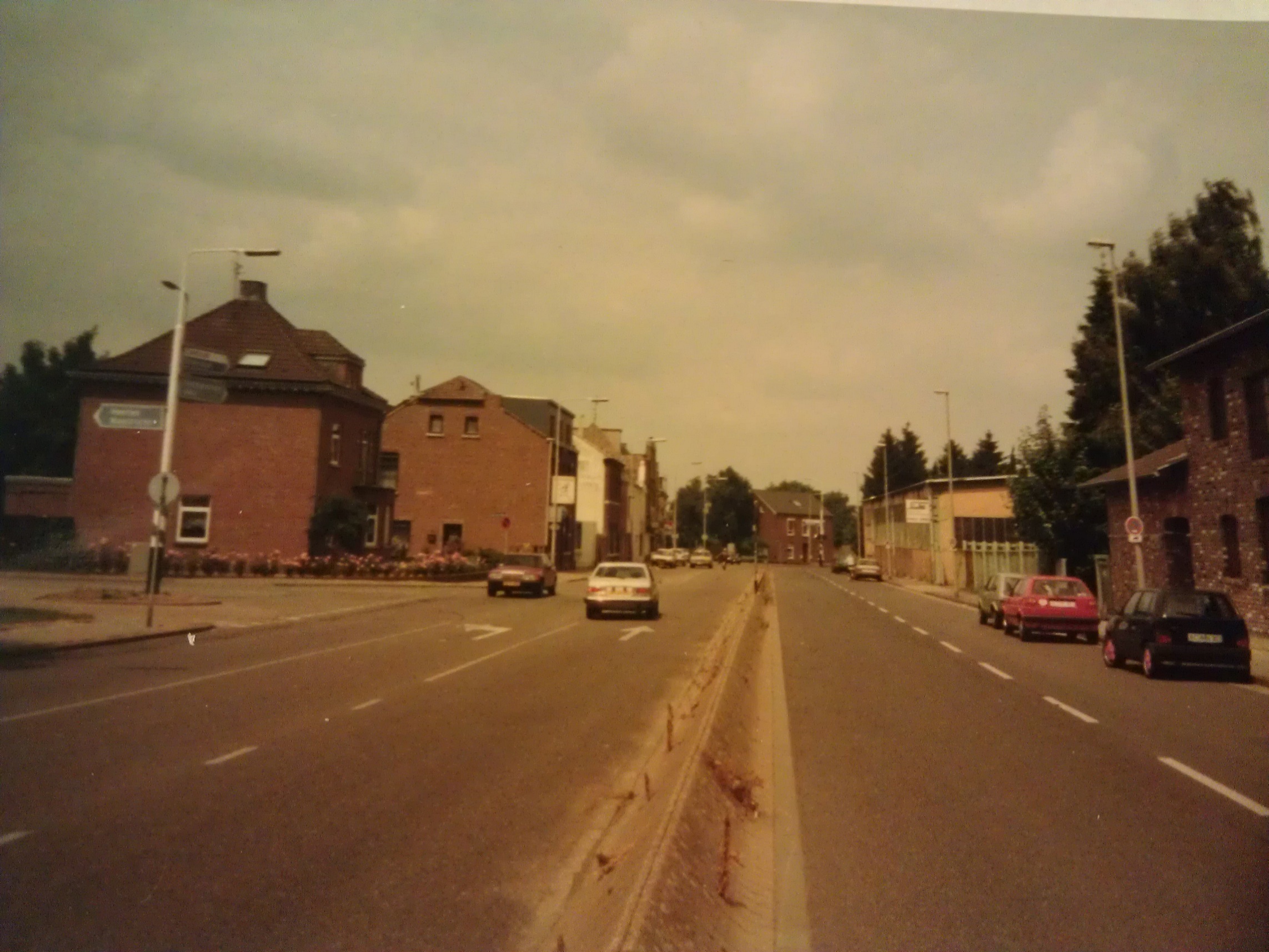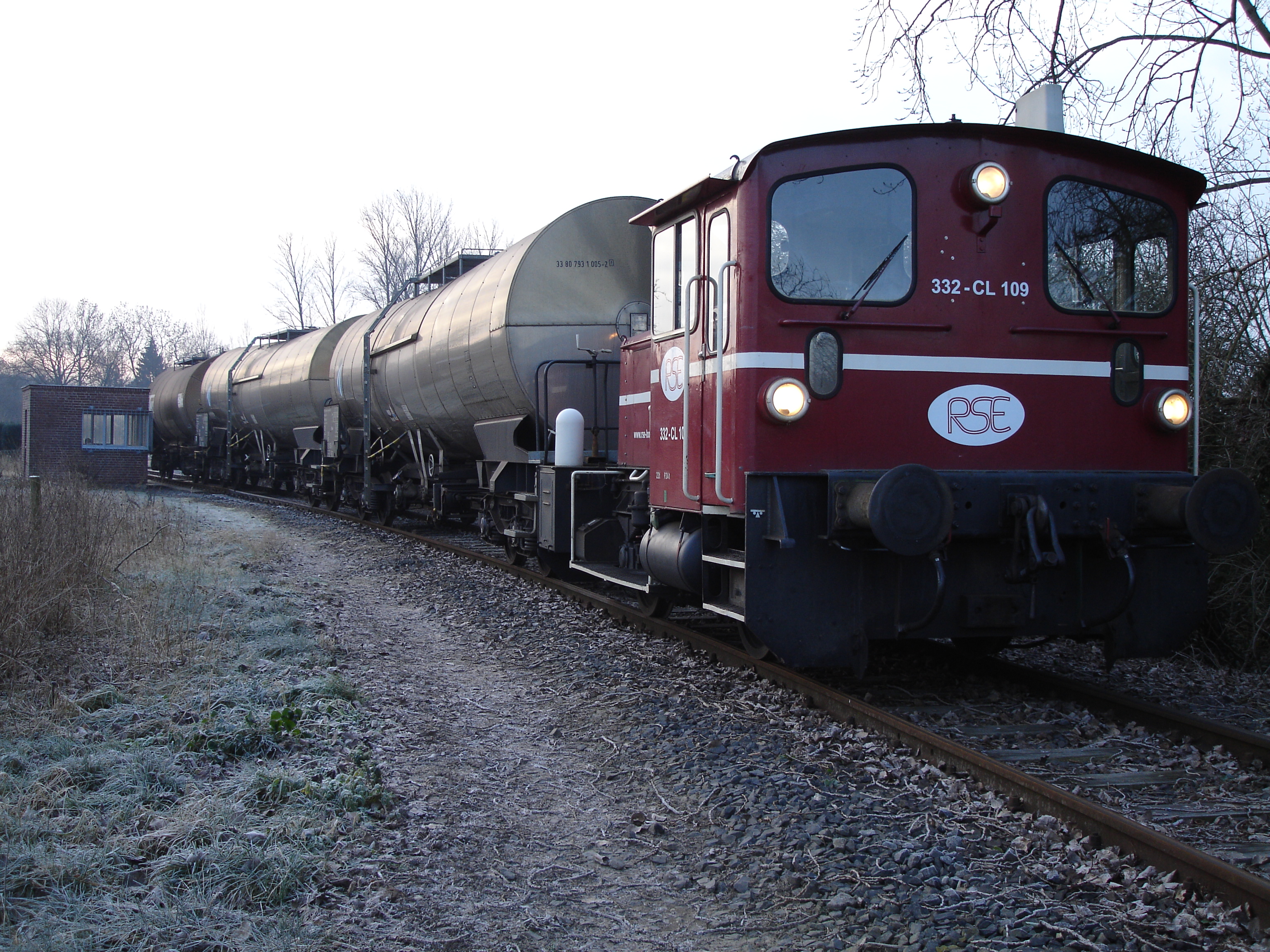|
ZLSM
The Zuid-Limburgse Stoomtrein Maatschappij (South Limburg Steam Train Company) or ZLSM is a heritage railway operating from its main station of Simpelveld to Schin op Geul and Kerkrade in the south of the Netherlands. It also runs across the border from Simpelveld to Aachen-Vetschau and has an extensive collection of stock. The ZLSM is currently partnered with the Great Central Railway in England, as they have both double-track railways, although one is disused. Rolling stock Steam Locos * SJ E2 1040 (1910) * SJ E 1090 (1911) * SJ B 1220 (1914) * SJ B 1289 (1916). ''Lease-lend from Spoorwegmuseum'' * NS 8826 (1944) * DRB 52 532 (1943). ''Lease-lend from private owner'' * Krauss "RWTH IFS 3 (Anna)" (1921). Diesel Locos * NS 248 "Sik" (1935) * Köf II "Lommaert" (1954) * KS 55 B "Laura" (1954). ''Lease-lent to a mining museum in Kerkrade * NS 639 "Hippel" (1957) * NS 677 "Hippel" (1955) * Esslingen Neuhof Q "EH 244" (1961) * DB Class Köf III "Spaniol" (1964) * DB Clas ... [...More Info...] [...Related Items...] OR: [Wikipedia] [Google] [Baidu] |
SJ B
The B class of the Swedish State Railways (SJ) was a type of steam locomotive for mixed traffic, introduced in 1909. 96 locomotives were built for SJ by between 1909 and 1919. The 4-6-0 B class was part of the development of modern superheated locomotives that had begun with the A class in 1906. Intended for fast freight trains and heavy stopping passenger trains, they proved to be highly useful in all types of traffic, and remained in use until the end of steam operations in Sweden. Eleven B class locomotives were sold to private railways during the 1930s, but all but one returned to SJ after the railway companies had been nationalized in the 1940s. One of the private operators, Stockholm–Västerås–Bergslagens Järnväg, had three more locomotives of the same type built, the last one in 1944. Most B class locomotives were eventually rebuilt with fully enclosed cabs, and some were equipped for oil-firing after the Second World War. When the locomotives became unne ... [...More Info...] [...Related Items...] OR: [Wikipedia] [Google] [Baidu] |
SJ E2
The E, E2 and E5 classes of the Swedish State Railways (SJ) were three closely related types of steam locomotives. The E class 0-8-0 locomotives were part of the development of modern superheated types that had begun with the A class in 1906, and were intended for both mixed traffic in Norrland and heavy freight trains in southern Sweden. Many of them were rebuilt to the 2-8-0 E2 class between 1935 and 1951, enabling a speed increase from to . Three E class locomotives built for private railways became known as the E5 class following nationalization, as they were slightly heavier than the ones built for SJ. The E class was ill-suited for hauling express trains, due to their low speed, but they were otherwise used for all types of traffic and in all parts of Sweden. The light axle load meant that they could be used on minor lines and industrial railways, extending their use after mainline steam operations had been reduced. Both E and E2 class locomotives remained in daily servi ... [...More Info...] [...Related Items...] OR: [Wikipedia] [Google] [Baidu] |
SJ E
The E, E2 and E5 classes of the Swedish State Railways (SJ) were three closely related types of steam locomotives. The E class 0-8-0 locomotives were part of the development of modern superheated types that had begun with the A class in 1906, and were intended for both mixed traffic in Norrland and heavy freight trains in southern Sweden. Many of them were rebuilt to the 2-8-0 E2 class between 1935 and 1951, enabling a speed increase from to . Three E class locomotives built for private railways became known as the E5 class following nationalization, as they were slightly heavier than the ones built for SJ. The E class was ill-suited for hauling express trains, due to their low speed, but they were otherwise used for all types of traffic and in all parts of Sweden. The light axle load meant that they could be used on minor lines and industrial railways, extending their use after mainline steam operations had been reduced. Both E and E2 class locomotives remained in daily serv ... [...More Info...] [...Related Items...] OR: [Wikipedia] [Google] [Baidu] |
NS Class 600
The NS Class 600 were a class of 65 shunting locomotives built by English Electric in England between 1950–1957 for Nederlandse Spoorwegen (NS). The first 10 were built at Dick, Kerr & Co, Preston and the remaining 55 at Vulcan Foundry, Newton-le-Willows. They are very similar to the British Rail Class 11. Twenty-three locomotives were later fitted with radio remote-control, and renumbered in the range 671–693.British built shunters return to UK soil ''Railways Illustrated'' issue 35 January 2006 page 44 In 2013 there are still two locomotives active daily in The Netherlands. One is active for Railpro in Crailoo and the other is active for LOCON Benelux in Apeldoorn. Class 500 There was also the similar NS Class 500. The difference between the two classes is that Class 600 has a "6KT" diesel engine of and a Knorr braking system for train use, a Class 500 has a "6K" diesel engine of and only an engine brake. The first ten locomotives of the class 500 were built for the ... [...More Info...] [...Related Items...] OR: [Wikipedia] [Google] [Baidu] |
Schin Op Geul Railway Station
Schin op Geul railway station is located in Schin op Geul, the Netherlands. The station opened on 23 October 1853 on the Maastricht–Aachen railway. In 1914, Schin op Geul became one end of a Heerlen–Schin op Geul railway. The station building is used as a restaurant as well as a waiting area. Train services Schin op Geul station is served by Arriva with the following train services: *''Stoptrein'' S4: Maastricht–Heerlen Schin op Geul is the western terminus of the heritage railway to Aachen. That line is exploited by the Zuid-Limburgse Stoomtrein Maatschappij The Zuid-Limburgse Stoomtrein Maatschappij (South Limburg Steam Train Company) or ZLSM is a heritage railway operating from its main station of Simpelveld to Schin op Geul and Kerkrade in the south of the Netherlands. It also runs across the bord .... References External linksZLSM website Railway stations on the Heuvellandlijn Railway stations in the Netherlands opened in 1853 Rijksmonuments in Valkenburg ... [...More Info...] [...Related Items...] OR: [Wikipedia] [Google] [Baidu] |
NS Class 8800
The NS 8800 was a series of tank engines of the Dutch railway Nederlandse Spoorwegen, NS for the shunting service. Of the approximately 324 British-built Hunslet Austerity 0-6-0ST, Hunslet Austerity C (0-6-0ST) saddle tank locomotives, many were used by the British War Department during their fight against the German army in mainland Western Europe. The NS bought 27 of them just after World War II. They had been built by the Hunslet Engine Company (12), W. G. Bagnall, WG Bagnall (3), Robert Stephenson & Hawthorns (RSH) (6) and Hudswell Clarke (6). In NS service After the departure of the British army in 1945, the Dutch Railways bought 31 copies. Four engines were sold to the Staatsmijnen in Limburg after a short time. The other 27 were assigned the NS numbers 8801-8827 and were used for shunting until 1957. They were liked by crews and had the name not to "leave" any train standing. Shunting a heavy coal train was not difficult for these locomotives and they were loved by dr ... [...More Info...] [...Related Items...] OR: [Wikipedia] [Google] [Baidu] |
Kerkrade
Kerkrade ( Ripuarian: ; li, Kirkraoj; german: Kerkrade or ''Kirchrath'') is a town and a municipality in the southeast of Limburg; the southernmost province of the Netherlands. It forms part of the Parkstad Limburg agglomeration. Kerkrade is the western half of a divided city; it was part of the German town of Herzogenrath until the Congress of Vienna in 1815 drew the current Dutch-German border and separated the towns.Jan Buursink and Nicole Ehlers"The Binational City of Eurode". University of Nijmegen. This means that the eastern end of the city marks the international border. The two towns, including outlying suburban settlements, have a population approaching 100,000, of which nearly 47,000 are in Kerkrade. History The history of Kerkrade is closely linked with that of the adjacent town of Herzogenrath, just across the German border. Herzogenrath began as a settlement, called Rode, near the river Worm (or Wurm in German) in the 11th century. In 1104 Augustinian monks founde ... [...More Info...] [...Related Items...] OR: [Wikipedia] [Google] [Baidu] |
Railway Lines In Limburg (Netherlands)
Rail transport (also known as train transport) is a means of transport that transfers passengers and goods on wheeled vehicles running on rails, which are incorporated in tracks. In contrast to road transport, where the vehicles run on a prepared flat surface, rail vehicles (rolling stock) are directionally guided by the tracks on which they run. Tracks usually consist of steel rails, installed on sleepers (ties) set in ballast, on which the rolling stock, usually fitted with metal wheels, moves. Other variations are also possible, such as "slab track", in which the rails are fastened to a concrete foundation resting on a prepared subsurface. Rolling stock in a rail transport system generally encounters lower frictional resistance than rubber-tyred road vehicles, so passenger and freight cars (carriages and wagons) can be coupled into longer trains. The operation is carried out by a railway company, providing transport between train stations or freight customer facil ... [...More Info...] [...Related Items...] OR: [Wikipedia] [Google] [Baidu] |
Railway Lines In The Netherlands
Rail transport (also known as train transport) is a means of transport that transfers passengers and goods on wheeled vehicles running on rails, which are incorporated in tracks. In contrast to road transport, where the vehicles run on a prepared flat surface, rail vehicles (rolling stock) are directionally guided by the tracks on which they run. Tracks usually consist of steel rails, installed on sleepers (ties) set in ballast, on which the rolling stock, usually fitted with metal wheels, moves. Other variations are also possible, such as "slab track", in which the rails are fastened to a concrete foundation resting on a prepared subsurface. Rolling stock in a rail transport system generally encounters lower frictional resistance than rubber-tyred road vehicles, so passenger and freight cars (carriages and wagons) can be coupled into longer trains. The operation is carried out by a railway company, providing transport between train stations or freight customer facilit ... [...More Info...] [...Related Items...] OR: [Wikipedia] [Google] [Baidu] |
Passenger Car (rail)
A passenger railroad car or passenger car (United States), also called a passenger carriage, passenger coach (United Kingdom and International Union of Railways), or passenger bogie (India) is a railroad car that is designed to carry passengers. The term ''passenger car'' can also be associated with a sleeping car, a baggage car, a dining car, railway post office and prisoner transport cars. The first passenger cars were built in the early 1800s with the advent of the first railroads, and were small and little more than converted freight cars. Early passenger cars were constructed from wood; in the 1900s construction shifted to steel and later aluminum for improved strength. Passenger cars have increased greatly in size from their earliest versions, with modern bi-level passenger cars capable of carrying over 100 passengers. Amenities for passengers have also improved over time, with developments such as lighting, heating, and air conditioning added for improved passenger ... [...More Info...] [...Related Items...] OR: [Wikipedia] [Google] [Baidu] |
South Limburg (Netherlands)
South Limburg (Dutch: ''Zuid-Limburg'', Limburgish: ''Zuud-Limburg'') is both a COROP (statistical) region as well as a '' landstreek'' (area) of the Netherlands located in the province of Limburg. The Dutch term ''landstreek'', literally translated "land area/region", means that the area is not an administrative region but an area that displays cohesion with regard to culture and landscape. With regards to South Limburg this deals with its hilly landscape, especially in the Heuvelland region, sunken lanes, an abundance of castles, and the regional language Limburgish spoken by a significant part of the population alongside Dutch. The region also contains the highest point above sea level in mainland Netherlands, the Vaalserberg being above sea level (the highest point of the entire country is in the Caribbean Netherlands' island of Saba, namely Mount Scenery being above sea level). The region South Limburg in addition, although extended a little further north to Roermond, form ... [...More Info...] [...Related Items...] OR: [Wikipedia] [Google] [Baidu] |
DB Class Köf III
The DB railways Köf III class (after 1968 named classes 331, 332, 333 and 335) are light two axle shunting locomotives of Deutsche Bahn AG. History The German national railways had already procured small locomotives of classes Kö I (up to ) and Köf II (up to for light shunting duties at small and medium-sized railway station. These locomotives were attached to their particular station and their use resulted in shortened travel times of mixed trains since the train locomotives did not need to complete all of the shunting work before the train could proceed to the next destination. After the Second World War the small locomotives of the Köf II class were in much demand and overused, but the use of a more powerful shunting locomotive such as the class V 60 was precluded, primarily for cost reasons: Small locomotives of the Köf type were cheaper to operate since the driver did not need to be a fully qualified locomotive driver. In the 1950s, in order to close the gap be ... [...More Info...] [...Related Items...] OR: [Wikipedia] [Google] [Baidu] |







